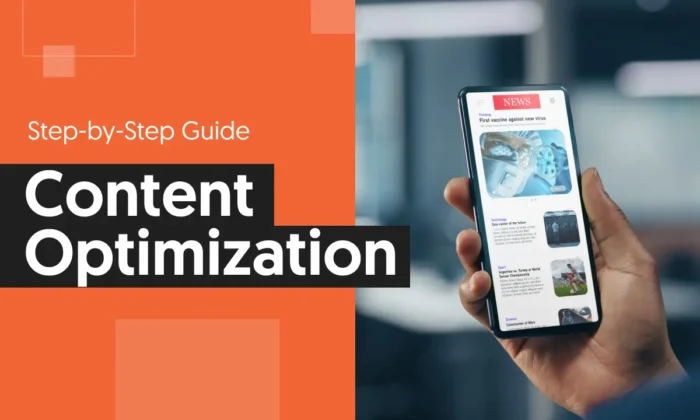
It’s been over a month since the March 2024 core and spam updates descended upon the SEO community and put it in a tailspin. We shouldn’t be too surprised that Google wants to combat spam in the SERPs since, for months, the SERPs have shown less-than-quality results. It is, however, a surprise at how fast and volatile the updates are. Just days after the updates went live, sites were deindexed and given manual penalties for conducting spammy practices.
This swift action supports Google’s mission to reduce low-quality content in search results by 40% — a considerable undertaking considering how many websites are crawled and indexed daily. As the dust settles in the wake of the updates, SEOs are left wondering where content quality stands regarding ranking.
Hint: it’s more important than ever.
What is Unhelpful Content?
It’s important to note that the March core update integrated the Helpful Content System (HCU) into the algorithm. This is a big deal because the HCU redefines helpful and unhelpful content. Both updates focus on providing person-first content in the search results. So, what exactly is unhelpful content?
Google is explicit in its explanations of content quality. Its Search Quality Evaluators Guidelines provide a framework that human evaluators use to evaluate the search results. According to the guidelines, low-quality content is “pages that do not achieve their purpose well because they lack an important dimension or have a problematic aspect.”
The evaluators consider several factors, including the quality and relevance of the main content, E-E-A-T, distracting ads, a negative reputation, and unsatisfying information. If the content is severely lacking in these areas, it is labeled low-quality. More recently, the guidelines were updated to include AI-generated content that contains factual inaccuracies, which is also labeled low-quality content.
Additionally, the March spam update introduced new spam policies that penalize sites using manipulative tactics to gain rankings.
Scaled Content Abuse refers to sites creating a mass amount of content solely for ranking purposes. This policy aims to combat this behavior regardless of whether the content is created by automation or humans.
Site Reputation Abuse refers to sites featuring low-quality content from third-party sites to improve their search rankings. Now, Google’s algorithm will identify this spammy tactic. This policy will go into effect on May 5, 2024.
Expired Domain Abuse refers to websites that buy expired domains with high authority or established backlinks and use them to publish low-quality content for ranking purposes.
What does all this mean?
Content has to be relevant, valuable, and focused on user intent to rank in the new Google.
Key Elements of High-Quality Content
According to John Mueller, Google looks at the overall website’s quality to determine the content’s quality. Google values user experience (UX), so it’s not enough to just write good content. The page and website need also to be user-friendly and accessible.
While there isn’t a recipe for creating high-quality content, there are characteristics that every piece of content should have to be considered high-quality:
- Relevance: High-quality content aligns with user intent.
- Usefulness: High-quality content should provide helpful, actionable information.
- Thoroughness: High-quality content fully answers a question or solves a problem.
- Engagement: High-quality content sparks a discussion.
- Genuineness: High-quality content is transparent, honest, and authentic.
No matter what, the content should always be created with the user in mind. Google specifically deters SEOs from writing content purely for search engines, stating that this content is less helpful.
Best Practices for Creating High-Quality Content
In the new Google, the term “quality content” has shifted. The old way of creating content was to conduct keyword research, write better content than the competitors, optimize, and rank. While this still rings true, SEOs must pivot their content creation methods to keep the user at the forefront of the process.
Bigger Emphasis On User Intent
Google Search Liason Danny Sullivan recently advised that websites should focus on pleasing people, not search engines. Sullivan discovered a pattern where sites that don’t rank well often include characteristics that were implemented in the hopes of ranking rather than readability. While these content aspects are not spammy techniques in and of themselves, they are often used without the user in mind. For example, does the reader really need a table of contents in a blog post? Or did the site owner put the table of contents there to help search engine crawlability?
Instead, SEOs should create content based on what the user likes and needs. This is where user intent comes in. User (or searcher) intent is the primary goal a user has when typing a query into a search engine. There are four types of intent:
- Informational: The searcher is looking for an answer to a question.
- Commercial Investigation: The searcher wants to compare options for a product or service.
- Transactional: The searcher wants to purchase a product or service.
- Navigational: The searcher wants to find a specific site or article.
Each type of searcher intent will change how the content is written. For example, an informational query would not have transactional language. Typically, each piece of content should target one query to prevent it from becoming muddled.
Focus on E-E-A-T
The March 2024 updates focus on experience, expertise, authoritativeness, and trustworthiness (E-E-A-T). This core update wants to end thin, search-engine-first content, which became a big problem after the AI writing boom. Many sites use AI to create content on a larger scale. However, these AI-generated pieces would only scratch the surface of a subject. After the March 2024 update, the Search Quality Guidelines were updated to include AI-generated content that contains factual inaccuracies as low-quality content.
While E-E-A-T is not a ranking factor, it does set the standard for content that ranks. Human evaluators use E-E-A-T to evaluate the content that ranks in the SERPs and measure how effective the search engine is at delivering relevant content. Understanding E-E-A-T can help content creators self-assess their content to achieve success.
It’s safe to say that having high E-E-A-T characteristics in content is a sure way to stay within Google’s guidelines and, hopefully, in the rankings. This means content should have high levels of:
- Experience: demonstrates the author’s experience;
- Expertise: showcases subject matter expertise;
- Authoritativeness: refers to the overall reputation of the site and the author within the industry or niche;
- Trustworthiness: refers to how reliable, safe, accurate, and honest the content is.
Out of the four characteristics, trust is the most important. Trustworthiness helps ensure that the content will not harm searchers. Experience, expertise, and authority all contribute to the overall trust of the content.
Create A Better Experience
Page experience was introduced to Google’s ranking system in 2020 to improve the searcher’s browsing experience, combining core web vitals with existing search signals to measure page experience.
To create a better page experience, first, ensure the page has good core web vitals and is secure. Does it load on mobile correctly? Is it free of intrusive ads? Can visitors navigate the page easily? If yes, you can also implement these best practices for a better page experience:
- Optimize page loading speed;
- Prioritize content above the fold;
- Optimize images and multimedia components;
- Minimize server response time;
- Ensure browser compatibility;
- Enable browser caching;
- Implement user-friendly navigation;
- Reduce the number of redirects;
- Use browser prefetching;
- Optimize font delivery;
- Optimize forms and interactivity.
The page experience report can be used to monitor page experience in Google Search Console. By creating a good page experience, searchers are more likely to return to the same content, showing Google that it is worthy of ranking in the SERPs.
Building Inbound Links To Boost Content Authority And Credibility
Building inbound links, or backlinks, to a site can play a pivotal role in boosting content in the SERPs. When high-quality websites link back to content, it validates its quality and relevance. High-quality, relevant backlinks can signal to users and search engines that the content is trustworthy and reliable and can boost the overall visibility of the content.
The key to this strategy is to build high-quality backlinks, not cheap, low-quality links that could do more harm than good. Engaging with cheap links can lead to removal from search results, Google ignoring links, and decreased credibility.
Building a diverse and natural backlink profile with a mix of anchor text, referring domains, and link types contributes to your website’s overall quality. A healthy link profile reflects positively on your content quality, signaling to search engines that your website is a valuable and authoritative resource within its niche or industry.
Creating high-quality, sustainable content is crucial to maintaining long-term SEO growth, especially considering Google’s core updates. Implementing these strategies allows you to adapt to Google’s algorithm changes and maintain long-term SEO growth.



